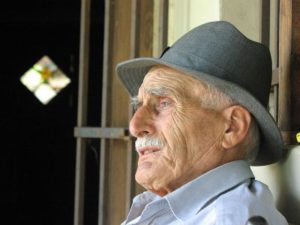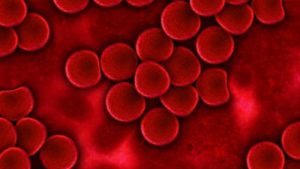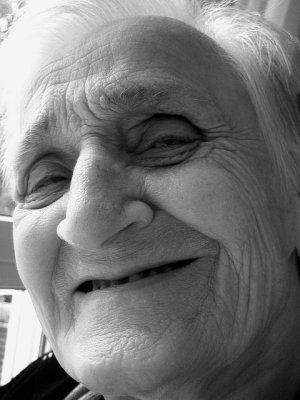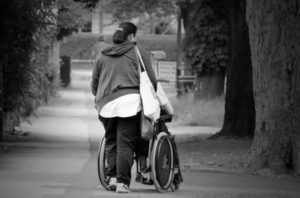Ageing

Ageing (spelled aging in American English) is a constant reminder of the passage of time. The process, and even the purpose, of ageing is a question that has intrigued and puzzled scientists for centuries, although modern science is finally beginning to throw some light on the subject.
Technically, ageing just refers to the gradual changes a person goes through over their life, a process that starts at birth and continues until death. What is often meant by the phrase, though, is the gradual deterioration a person experiences in their latter years, a process perhaps better described as senescence or, more colloquially, “old age”. Senescence might be defined as the process of accumulative changes to molecular and cellular structure that occur with the passage of time, resulting in disrupted metabolism, gradual deterioration and, eventually, death. More simply, it is the process of growing old, or developing the appearance and characteristics of old age.
There is no one universal and unambiguous definition of what constitutes old age. Most developed Western countries set the age of 60 or 65 for retirement and eligibility for old-age social programs, but other countries and societies may reckon the onset of old age as anywhere from the mid-40s to the 70s. Increasing life expectancy has also shifted definitions of old age, and what constitutes “old” also depends on one’s point of reference: for example, ask a person under 30 and they will probably reply that old age begins at 60, but ask someone over 65 and they are more likely to say 75.
Different Measurements of Age
As we know from our daily lives, different people age at different rates, and some individuals, and even some cultures, tend to age more gracefully than others. A person’s biological age can differ significantly from their actual chronological age, and a battery of tests can be carried out to assess a person’s biological or physical age. It is even possible to show that different parts of an individual’s body can age relatively more quickly or more slowly than other parts.
Additionally, it should also be borne in mind that a person’s chronological age, and even their biological age, may differ considerably from their functional age, their apparent age based on their functional capabilities in day-to-day activities. Functional age is sometimes considered to comprises four different dimensions: chronological, biological, psychological and social.
Marks of Old Age
The most common physical marks of old age include:
- thinning and greying hair;
- wrinkled, dry and inelastic skin;
- weakened breathy voice as vocal chords vibrate more slowly;
- thin, shrunken and brittle bones, along with an increased risk of injury from falls;
- dental problems, tooth decay and gum infection;
- the onset of chronic geriatric diseases, such as arthritis, hypertension, heart disease, cancer, cataracts, osteoporosis, type 2 diabetes, etc;
- reduced ability to respond to stress;
- increased homeostatic imbalance in the body and its processes;
- digestive disorders, such as difficulty in swallowing, inability to eat enough and to absorb nutrition, constipation, etc;
- impaired eyesight;
- impaired hearing;
- diminished sense of taste;
- less efficient heart, lung and immune system function;
- decreased sex drive;
- chronic insomnia and other sleep disorders;
- urinary incontinence; etc.
The mental marks of old age include:
- a preference for routine, and being “set in one’s ways”;
- increased cautiousness and avoidance of risk-taking;
- increased fear of crime;
- increased risk of depression, including “deprejudice” (when earlier anti-elderly prejudice turns inward);
- reduced mental and cognitive ability, including memory loss (although semantic memory of general knowledge, vocabulary, etc, often remains stable, or even improves, until other conditions cause deterioration);
- increased onset of various mental disorders, including dementia (particularly Alzheimer’s disease), which may also lead to wandering, physical aggression, verbal outbursts, depression and psychosis;
- in general, a more adaptable, agreeable and accepting attitude, although a minority may exhibit feelings of frustration, incompetence and worthlessness.
Biological Processes

Most of the characteristics of ageing are associated with gradual and accumulated cell damage. For example, after a certain age, the collagen framework of skin starts to deform, and the skin cells begin to produce the wrong proteins, so that the skin gradually collapses into wrinkles; the cells that produce black pigment for our hair stop producing it, so that our hair turns grey or white; etc.
Most of the cells in our bodies, with the notable exceptions of the cells in the heart and the brain, replicate and replace themselves regularly throughout the natural course of life, which would seem to suggest that cells should be effectively immortal. However, it has also become apparent in recent decades that cells themselves have a finite lifetime and can become “exhausted”. In fact, some scientists believe that cells may be genetically programmed in this way to last just long enough for us to rear children, and no longer.
It seems that there is a natural predetermined limit (known as the Hayflick Limit after its discoverer, Leonard Hayflick) to the number of times a cell can perform this replication process, usually between 40 and 60 times. Even stem cells, the great hope of many a novel medical procedure (particularly anti-ageing treatments) are subject to this same degradation, albeit at a slightly lower rate. Within the cells, each chromosome has specialized fragments of DNA called telomeres at its ends, which essentially protect the DNA. However, with each replication, little bits of DNA become lost from these telomeres, which gradually becomes shorter and shorter as we age. When the telomeres shorten to a critical length, cell division stops and the cell enters a phase called cell senescence, or the cell may even self-destruct. The length of telomeres can therefore be looked on as a kind of “molecular clock”.
Senescent cells remain metabolically active, but appear flattened, and their gene expression and secretion profile is altered. Shortened telomeres also leave the main strings of DNA increasingly at risk from replication errors and mutations, and from naturally occurring DNA damage uncorrected by the usual DNA repair mechanisms. These errors and damage also lead to the release of damaging free radicals, the weakening of immune systems, etc – in short, the general decrease in strength and vitality and the gradual running down of body functions and processes that we refer to as ageing.
It is a particular irony that many cancer and germ cells appear to be exempt from this self-limiting behaviour, and, even more ironic, cellular senescence itself may have evolved specifically to prevent the onset of cancer (on the grounds that cells that have divided many times will have accumulated DNA mutations and would therefore be in danger of becoming cancerous if cell division continued).
These ageing processes occur in a similar way in almost all animals, but interestingly there are some tiny freshwater animals called hydra that have been shown to exhibit a very specific regenerative ability, so that they appear not to age or to die of old age, giving them a potentially unlimited lifespan. Whether the abilities of these kinds of animals have any implications for human ageing is still a controversial matter, and certainly there is still a long way to go before we might understand how they may help to reduce or even eliminate human senescence.
Genetic Aspects of Ageing
In addition to this process of cellular senescence, and the chemical damage to cellular structure from ongoing cell processes (e.g. oxidative stress, glycation, glycoxidation, etc), there are also ongoing changes in gene expression during old age that affect the body systems responsible for maintenance, repair, and defense responses, as well as gradual changes in hormonal signalling over the body’s lifespan.
Yeast cells are another example of non-human cells that appear to be effectively immortal, and research by scientists like Paul Nurse has shown that human genes transplanted into yeast cells can live indefinitely, suggesting that perhaps we are not genetically programmed for death after all. Gordon Lithgow, a researcher at the Buck Institute for Age Research, has been investigating gene changes in nematodes (roundworms), and simply by activating already existing genes he has succeeded in extending their normal lifespans by more than six times, but again how this might benefit humans is far from clear.
Progeria is a (thankfully) rare genetic disease in which symptoms resembling aspects of ageing are manifested at a very early age. Children with this disorder usually have small, fragile bodies, like those of elderly people, and symptoms include limited growth, baldness and a distinctive appearance (typically a small face with a shallow recessed jaw, prominent eyes, and a pinched nose). Mental development is not adversely affected; in fact, intelligence tends to be normal to above average. Sufferers of this condition typically only live to their mid-teens, and usually die from “old age diseases” like heart attack or stroke.
Perception of Time in the Aged

As noted in the section on Temporal Illusions, the subjective with increasing age in humans. Older people often complain that the years (and even the days) pass much more quickly than they used to, and they are prone to underestimate given intervals of time. Various explanations for this common experience have been put forward, including: the fact that younger people are still living through new and interesting (rather than repeated and routine) experiences, requiring more neural resources and brain power, and are less subject to the neural adaptation experienced by older people; the fact that a single day (or an hour) represents a much larger proportion of the lives of young people as compared to older people; the general slowing down of most organic processes in the bodies of older people; the lower dopamine levels in the ageing brain; etc.
But it may even be that our internal biological clocks literally slow down in some way as we age (see the section on Biopsychology). In experiments, younger people estimate durations of time as longer than reality, while older people estimate the same durations as short than reality. Older people therefore seem to mark time more slowly, and perceive the world around them as having speeded up, suggesting that their internal clocks are working more slowly.
Life Expectancy, Longevity and Maximum Life Span
Life expectancy is technically the expected number of years of life remaining to a person at a given age, but it is usually used to mean the average life expectancy at birth for a particular population. Longevity, i.e. the length or duration of a life, is a very similar concept, but in practice it is usually used to refer to especially long-lived members of a population. Maximum life span is a measure of the maximum amount of time one or more members of a population has been observed to survive.
Worldwide, the average life expectancy at birth is currently around 71 years. Women typically live 3 – 5 years longer than men, and can expect on average a life of 73 years compared to 68 for men. However, the average varies greatly between countries, from around 45 – 49 years in some African countries like Sierra Leone, Central African Republic and Swaziland, to as much as 83 years in Japan and Switzerland (different studies yield slightly different figures).
Life expectancy has also varied greatly over time: in the Neolithic and Bronze Age, life expectancy was typically not much more than 20 – 25 years; in relatively civilized Classical Rome it was still less than 30; even in the early 20th Century, it was not much more than 30. Just a century later, though, thanks to public health measures, improved sanitation and medical advances, it has risen to 71. However, these figures are somewhat skewed by early childhood deaths: if a person survived to age 20, then, even in ancient times, their life expectancy may suddenly jump to 50 or 60.
The longest confirmed human lifespan in history was that of a French woman, Jeanne Louise Calment who lived from 1875 to 1997 (122 years, 164 days). Another 8 people have lived to a verified age of at least 116, and another 90 or so more to at least 114. It is now not that uncommon to encounter centenarians and even supercentenarians in daily life (a centenarian is a person who lives to or beyond the age of 100 years; a supercentenarian is a person who lives to or beyond the age of 110 years). Many cultures have myths of ancient people living to extremely old ages (e.g. in the Hebrew Bible, Adam was supposed to have lived to 930, Noah to 950 and Methuselah to 969), but these remain unconfirmed myths and various possible explanations have been put forward for how and why such unlikely ages were recorded.
Although the average life expectancy of humans has (as we have seen) increased dramatically, particularly in the last century, it is interesting to note that the upper limit of human longevity has remained more or less constant for centuries (at around 120 years of age), and this may well represent the natural limit of human existence.
Indeed, all species of animals appear to have a predetermined maximum lifespan (from the mayfly that lives for mere minutes, to the bowhead whale that is known to survive for over 200 years), although the precise mechanism for this predetermination remains a scientific mystery. It used to be thought that slow metabolic rates corresponded with longer lifespans, but even that possible correlation has been brought into doubt by more recent research. Typically, larger animals have slower metabolisms and longer lifespans, and smaller animals faster metabolism and shorter lifespans (e.g. rats and mice rarely live past 2 or 3 years, horses and bears to around 30, elephants to more than 60, and many whales even longer), but there are still exceptions and anomalies.
Birds in particular seem to live longer than their size and metabolism would indicate. Research has shown that birds have extremely efficient mitochondria (the energy production centres of cells), which leak about 10 times fewer free radicals than most animals, allowing them to live lives almost ten times longer than would have been expected. Research is also being carried out into sea urchins, which routinely live up to 150 years of age with few or no signs of normal ageing.
Population Ageing

Population ageing is the increase in the number and proportion of older people in a society or population, or, looked at another way, the increase in the median age of a society. It is largely due to two main factors, longer life expectancy (decreased death rate) and decreased birth rate, although migration (and migration policies) is increasingly also a factor in population age profiles.
Population ageing is a process currently taking place in nearly every country in the world, but Europe and Asia are the most profoundly affected regions. Within twenty years, many countries will face a situation where the largest population cohort will be those over 65, and the average age approaches 50 years old. Western Europe in particular is suffering from this problem – the so-called “greying of Europe”. Germany and Italy are the most acutely affected, closely followed by Spain, Denmark and Sweden. The situation in Japan, where already more than 20% of the population is over 65 years old, is even starker.
In some traditional cultures, the elderly are revered and respected for their accumulated wisdom. But in many others, they are marginalized, ostracized or relegated to subservience. Whatever local attitudes to seniority, though, there are undoubtedly many social and economic costs associated with increasingly elderly societies and ageing populations, as many developed industrialized countries are already discovering to their dismay. In particular, our quest for longevity puts increasing strain on health services, social benefits, pension funds, and workforce dynamics. Indeed, it affects the society as a whole.
Life Extension
Many people believe that the ageing process can be slowed or even arrested, and some believe it may even be reversed. The study of how to slow down or reverse the processes of ageing in order to extend maximum and average lifespans is known as life extension or experimental gerontology. Over the centuries, many potential solutions to the problem of life extension have been put forward, from rumours of the elixir of life to transcendental meditation techniques. But modern science is tackling the problem head on.
Diet has been shown to substantially affect lifespan in many animals, and it is well established that people who follow Mediterranean and vegetarian diets tend to have longer life expectancies. In particular, though, caloric restriction (restricting calories to 30-50% less than a free-feeding animal would consume, while still maintaining proper nutrient intake) has been shown to increase lifespan in mice by up to 50%, and tests are now progressing with humans. Several drugs and food supplements (including MK-677, rapamycin, resveratrol, alpha-lipoic acid, mitogen-activated protein kinases, nicotinamide adenine dinucleotide, etc) have been shown to retard the biological effects of ageing in various animals; however, none has yet been definitively proven to do so in humans. Regardless, the sale of supposed anti-aging products such as nutrition, physical fitness, skin care, hormone replacements, vitamins, supplements and herbs is a lucrative global industry, generating about $50 billion of revenue each year in the US alone.
Among the current technological solutions that show some promise in the area are:
- stem cell injections (either legal or illegal) have been shown to offer some dramatic reparative and regenerative effects, although the practice is highly controversial, particularly with regards to embryonic stem cells;
- cloning of genetically identical material could one day provide a way to generate cells, body parts or even entire bodies, but it also brings with it some almost insuperable ethical problems;
- nanotechnology as a potential method of repair of many damaging natural processes thought to be responsible for aging has been posited, but its development is still in its infancy;
- purging of senescent cells has been achieved in mice, resulting in significant improvements in general health and decreases in age-related disorders, but experiments in humans are still a long way off;
- gene therapy, in which artificial genes are integrated into an organism to replace mutated or otherwise deficient genes, has been proposed as a future strategy to prevent ageing, and has seen some promising results in mice;
- cryonics, storing the body at low temperatures after death, thus minimizing changes in biological tissue for many years, may provide an “ambulance” into a future in which advanced medical technologies may allow resuscitation and repair, curing of diseases, rejuvenation of the aged (as well as repair any damage caused by the cryopreservation process), but it is not generally seen as a reliable life extension option (no mammal has been successfully cryopreserved and brought back to life, and resuscitation from cryonics is not possible with current science).
There are still no international or even national programs focused on stopping ageing or on radical life extension, although there are now Longevity political parties in Russia, the USA, Israel and the Netherlands. There are also many life extension associations and movements, of varying degrees of legitimacy, devoted to extending the human lifespan.
Death

At the end of the ageing process comes inevitable death (technically, the cessation of all biological functions that sustain a living organism), the only sure way to truly arrest the process of ageing.
About two-thirds of the many deaths that occur each day (roughly 150,000 people worldwide) are directly or indirectly age-related, and the proportion in industrialized countries is much higher, perhaps as high as 90%. “Old age” itself is not a scientifically recognized cause of death, because there is almost always a more specific proximal cause, such as cardiovascular disease, cancer, diabetes, etc. The Gompertz–Makeham law of mortality explains how the mortality rate accelerates rapidly with age, because the death rate is composed of an age-independent component and an age-dependent component, the latter of which increases exponentially with age.
A death is almost always looked on as a sad and unfortunate event. However, when looked at objectively, death does have an evolutionary purpose: it makes room for the succession of generations and the evolutionary selection and development that the species as a whole needs to survive and flourish. It can be argued that the species looks after itself, not the individuals that comprise it, and, once the evolutionary requirement of reproduction is fulfilled (with some additional time appended for necessary nurturing and instruction), nature has little use for individuals. As mentioned above, our very cells may be genetically programmed to last just long enough for us to rear children, and no longer.
Indeed, it is perhaps a wonder that humans are able to live so long after our reproductive years have passed, especially when one considers some insects that devour their mates after reproduction, or certain marine worms whose very act of giving birth is designed to burst the parental body. One suggested explanation why humans are able to enjoy such a long old age (other than our advances in medical care, shelter, cultural and societal support, etc) is that there is relatively little evolutionary pressure or need for natural selection against late-acting mutations and diseases (perhaps because, in human prehistory, few members of the species survived past the age of 30 or 40), whereas if a mutation affected younger individuals (of reproductive age and with potentially much to offer to the species as a whole), natural selection against it would tend to be much stronger.